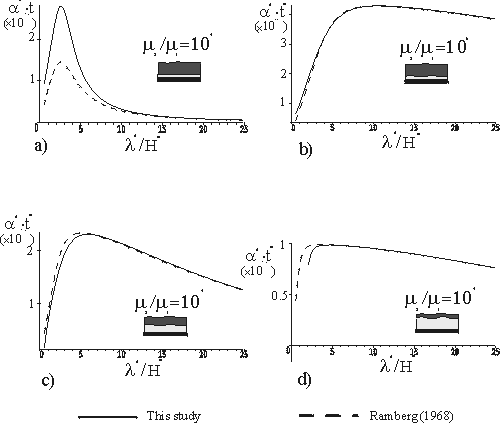New Extended Thin Sheet Approximation for
Geodynamic Applications - II. 2D examples
Medvedev S. E. & Y.Y. Podladchikov
Geophys. J. Int., 136, 586-608
Paper aims to demonstrate the potential of the ETSA by applying it
to 2D examples. The system of equations governing the ETSA is reduced to
2D and tested on problems involving one and two layer systems of Newtonean
viscous materials. The application of ETSA in each case includes (1) setting
boundary conditions, (2) completion of equations by evaluation of coefficients,
(3) comparison of equations with governing equations of existing thin sheet
approximations, and (4) linear analyses of small perturbations and determination
of their dominant wavelengths.
A set of computer codes for linear analyses of both ETSA and exact equations
is developed to investigate the accuracy, analytical behaviour and robustness
of ETSA.
Linear analyses compare well with exact analytical solutions over a wide
range of wavelengths for modelling isostatic adjustment, Rayleigh-Taylor
instabilities (results are shown on Fig.: for different viscosity profiles
and thicknesses of layers) and the development of instabilities due
to lateral compression and extension. The accuracy of the results provided
by ETSA is surprisingly high. Accurate instability spectra defined by linear
analyses are obtained by our long-wavelength-approximation, even at short
wavelengths.
It is shown that most previous approaches can be derived by simplification
of an extended system under specified boundary conditions. Analyses of
instabilities shows that the ETSA can be applied to geodynamic problems
that were not tractable to previous thin sheet approximations. Only buckling
could previously be handled by the TP approach. The development of other
mechanical instabilities was not possible with previous thin sheet models,
even where the competence contrast was high and the dominant wavelengths
were much longer than the thickness of the thin sheet.
